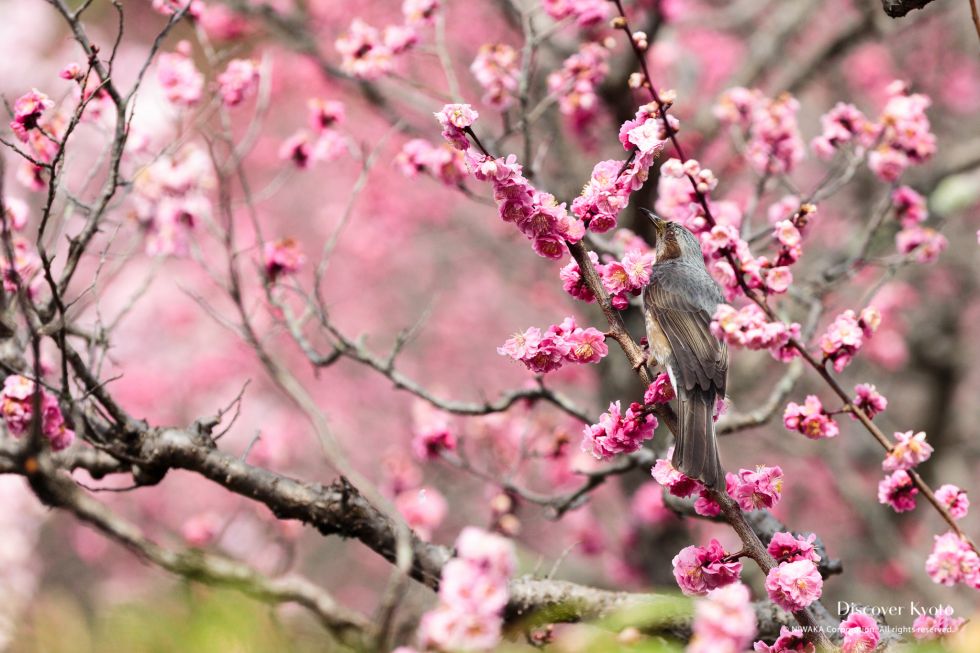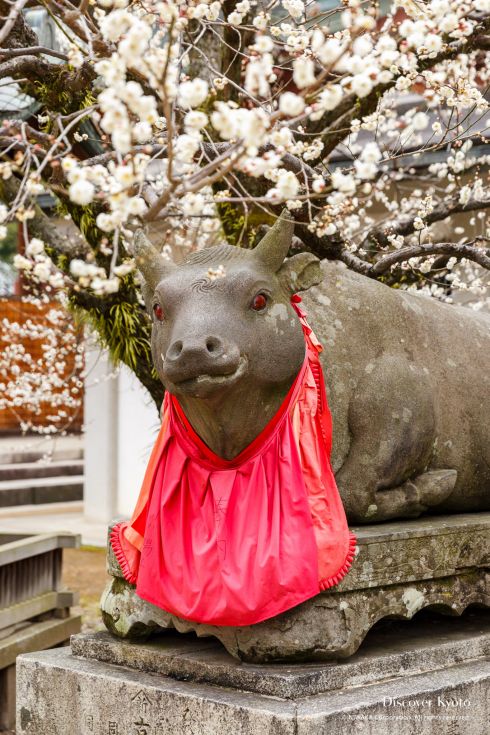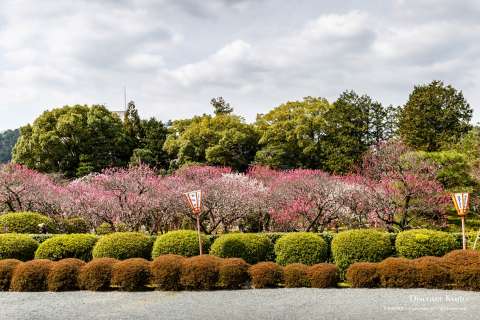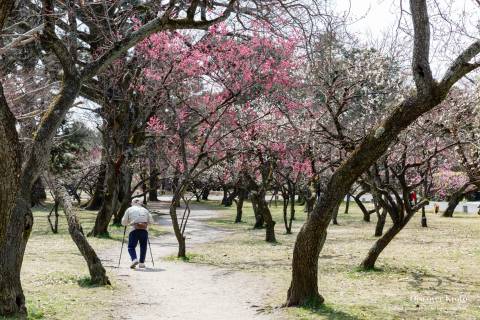Plum Blossoms|梅
Summary

Though Japan may be famous for its cherry blossoms, those knowledgeable about their greenery are aware that there are actually many more flowering trees and plants that are popular for seasonal viewing nationwide.
The precursor to the blooming of sakura, ume (plum trees) were introduced from China hundreds of years ago and come in shades from pure white to dark pink. Plums are a popular food in Japanese cuisine, and you will find them in many forms from your tea to pickles in the center of your rice balls. In addition, plum trees were thought to ward off danger, and it was once common to plant them in the northeast corner of gardens, that direction being considered most susceptible to misfortune.
Plum blossoms may be difficult to distinguish from cherry and peach to the untrained eye, and similarly to those other flowering trees they have a somewhat short lifespan. Still, plum trees bloom slightly longer and are usually visible from the colder month of February down through March. Events such as plum viewings and tea ceremonies are also held around this time. If you’re in Kyoto during this season, be sure to keep your eye out for these cheerful flowers blooming despite the chill in the air.
Jōnangū

Jōnangū is home to five different gardens placed around its shrine buildings. Beginning with the access point near the shrine’s omamori shop you enter the Haru no Yama (“Spring Mountain”) Garden, which offers a leisurely stroll over a small stream with a grove of camellia trees waiting beyond the shrine’s famous weeping plum blossoms. All told, Jōnangū's gardens are home to some 150 shidareume (weeping plum trees) in both white and pink, and about 300 tsubaki (camellia) trees. The shrine gardens are open from 9:00 to 16:30 (last entrance at 16:00), and entrance tickets cost 600 yen for adults.
Kitano Tenmangū

Kitano Tenmangū shrine worships Tenjin, the deified form of Sugawara no Michizane (845–903), an esteemed scholar, poet, and politician. Sugawara no Michizane is said to have loved plum trees from a young age and admired their beauty so much that he often wrote about them in his poetry. Before he left the capital, he wrote a particularly famous poem urging his beloved plum tree to continue blossoming in his absence, which is why there are so many ume (plum) trees planted on the Kitano Tenmangū grounds.
In fact, there are over 1,500 plum trees on the property, and over 50 different species are represented, visible in white, pink, and red. From February to March a special plum garden is open to the public with an admission price of 700 yen, allowing visitors to enjoy a space filled to the brim with the colorful trees.
There is even a famous outdoor tea ceremony held every February called Baikasai where visitors can enjoy green tea served by geiko and maiko.
Zuishin-in

The most famous seasonal offering at Zuishin-in temple is its Ono Plum Garden. Containing over 230 plum trees, the orchard, rimmed with azalea bushes, features white, red, and pink blossoms, with the hanezu shade of light pink being the most numerous. Strips of calligraphy are hung from the branches during the peak season in March, and the contrast between the vibrant green moss and the pink flowers certainly is poem-inspiring. Visitors are admitted to the garden between 9:00 and 16:30, and tickets cost 500 yen for adults.
Nijō Castle

Known as the Kyoto residence of the famous leader Tokugawa Ieyasu (the first shogun of the Edo Period), Nijō Castle is a stronghold that represents the prestige and power of the Tokugawa shogunate. With hundreds of varieties of flora, Nijō-jō is also a great place to view some of Japan’s treasured seasonal beauty. The ume at Nijō-jō were planted in 1954, and there are over 130 trees at the castle both scattered through the gardens and in a more concentrated bairin (plum grove) area. The variety of ume include: shiraume, momoiroume, benichidori, shidareume, and many more. Plum season at Nijō-jō usually starts from early February and lasts to late March.
Imperial Palace Park

One of the best places in the city center to relax, enjoy fine weather, or picnic with friends or family, the Imperial Palace Park is full of trails, lush grass fields, and seasonal flowers such as cherry blossoms, wisteria, plums, and lilies. On any given day you can spot Kyoto-ites relaxing on blankets spread on the grass, enjoying a bench break, jogging, walking their dogs, or biking through. The plum grove is made up of 200 trees that were grown from branch grafts taken from shrines all around Kyoto back in 1945. Blooming in red, pink, and white, the plum blossoms give a pop of color to the winter park. Next to this plum grove you can also find a copse of 70 peach trees, though their blooming seasons only overlap briefly in mid-March.
Umenomiya Taisha

Umenomiya Taisha in western Kyoto is a bit off the beaten path, but the shrine gardens aren't to be missed in plum, iris, or hydrangea season! It is said that Umenomiya Taisha used to be named and known for its powers over childbirth (umu), and plum trees came to be planted there because of how close the word sounds to plum (ume). The shrine grounds are now home to approximately 400 plum trees with 35 different varieties represented. Plum trees can be found everywhere, starting from the shrine's gate and main hall and all through the shrine's gardens. Entrance to the gardens costs 550 yen for adults, and you can enjoy a stroll from 9:00 to 17:00 (last entrance 16:30).
Nagaoka Tenmangū

Nagaoka Tenmangū, another shrine dedicated to the plum-loving Sugawara no Michizane, is located in Nagaoka-kyō southwest of Kyoto. While this shrine is more famous for its brilliant kirishima tsutsuji variety of azalea that bloom in late April and early May, Nagaoka Tenmangū is also home to about 300 plum trees. Though the majority of them are located in a grove area on the shrine grounds, they can also be found scattered around the property as well as decorating the main hall courtyard.
Gallery
-




 +32
+32
